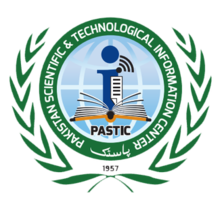Endoscopic Transcanal Surgery versus Endaural Microscopic Surgery in the Management of Attic Cholesteatomas at a Tertiary Care Center in Multan
Abstract
Objective: To compare postoperative outcomes in terms of hearing recovery, taste abnormalities and pain, and
audiological results of microscopic surgery and endoscopic surgery for the management of attic cholesteatomas.
Study Design: A prospective cohort study design.
Place and Duration of Study: The study was conducted at the ENT Department, Bakhtawar Amin & Nishtar
Medical Hospital Multan, Pakistan from June 2021 to December 2022.
Methods: A total of 90 patients were included by consecutive sampling, who were consecutively divided into 45
patients each in group A, microscopic endaural approach arm, and group B, endoscopic surgical approach arm.
The sample size was calculated by Epi Info keeping 50% population proportion, 5% margin of error, and 95% CI.
Patients diagnosed with cholesteatoma in epitympanum by otomicroscopic findings and CT and booked for
surgical treatment were included in the study. Patients with extended cholesteatoma, labyrinth fistulae, wide
mastoid involvement eustachian tube dysfunction, revision surgery, and pregnant women were excluded.
Informed consent of the participants was taken. Microscopic and endoscopic surgeries were performed by an
experienced operator. Patients were followed up after 1st, 3rd, and 6th months of surgery.
Results: Postoperatively, dizziness occurred in 4 (8.8%) patients in microscopic surgery groups and 3 (6.6%)
patients in endoscopic surgery group. Abnormal taste sensation was reported in 16 (35.5%) patients in Group A
and 12 (26.6%) patients in Group B. In terms of post-operative pain, 9 (20%) patients and 6 (13.3%) had
postoperative pain requiring analgesics (P= 0.3) in respective groups. The graft success rate in group A was
93.3% and in group B was 91.1%. The mean healing time in group A was 32.1 days and in group B was 34.7 days
(P= 0.5). Postoperatively, 55.5% of patients in the MES group and 51.1% in the endoscopic ear surgery (EES)
group had a hearing threshold between 21-30 decibels.
Conclusion: Both endoscopic endaural and microscopic approaches have similar outcomes for surgical
management of attic cholesteatomas in terms of hearing improvement, post-operative pain, and healing times.
Copyright (c) 2024 Sanaullah Bhatti, Muhammad Tauseef Ijaz, Amber Irfan

This work is licensed under a Creative Commons Attribution-NonCommercial 4.0 International License.














